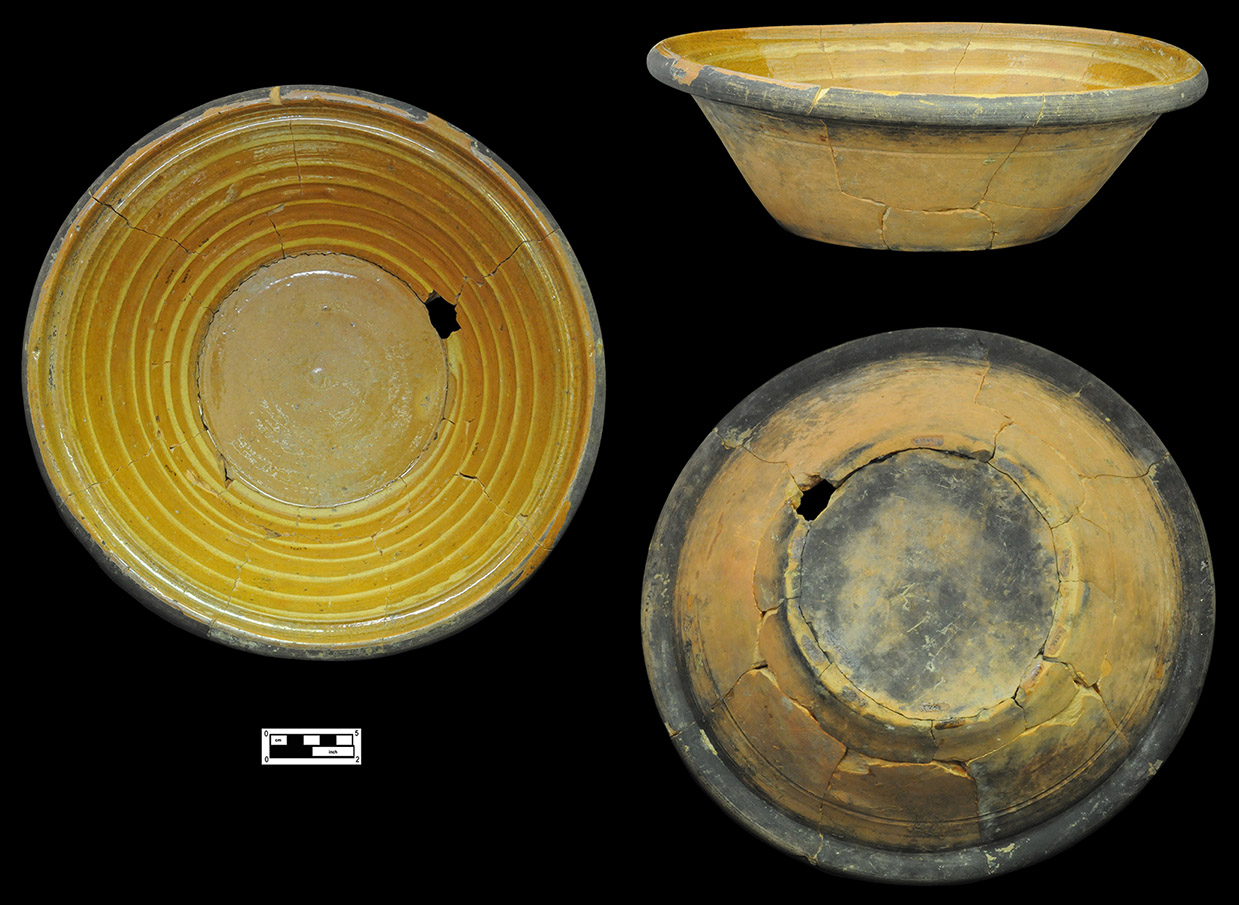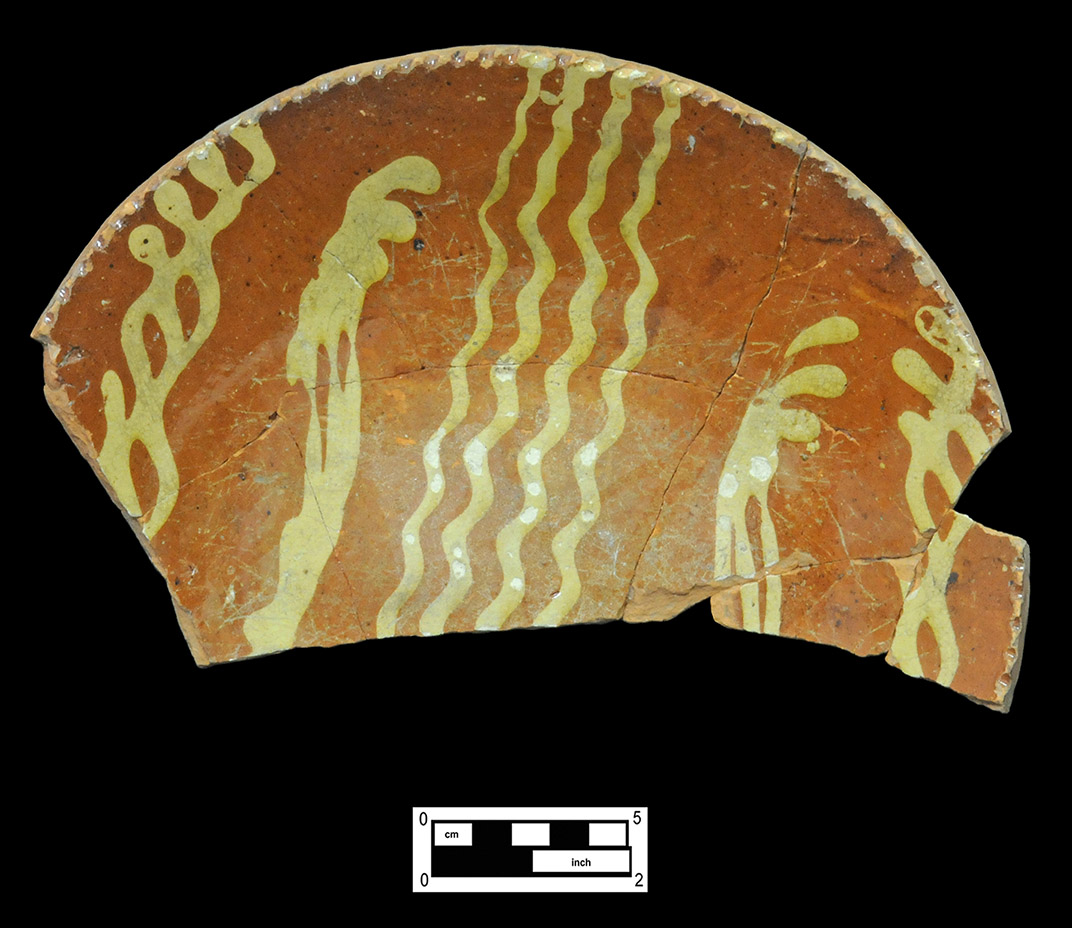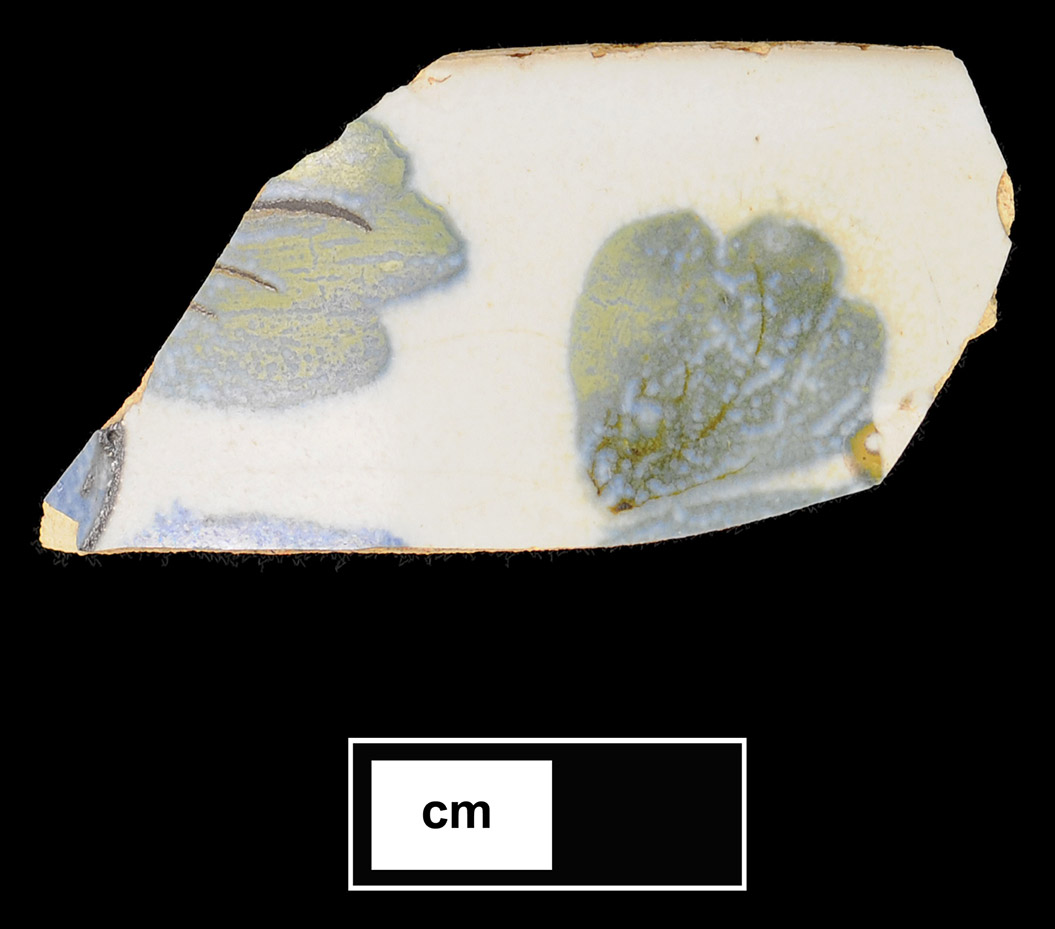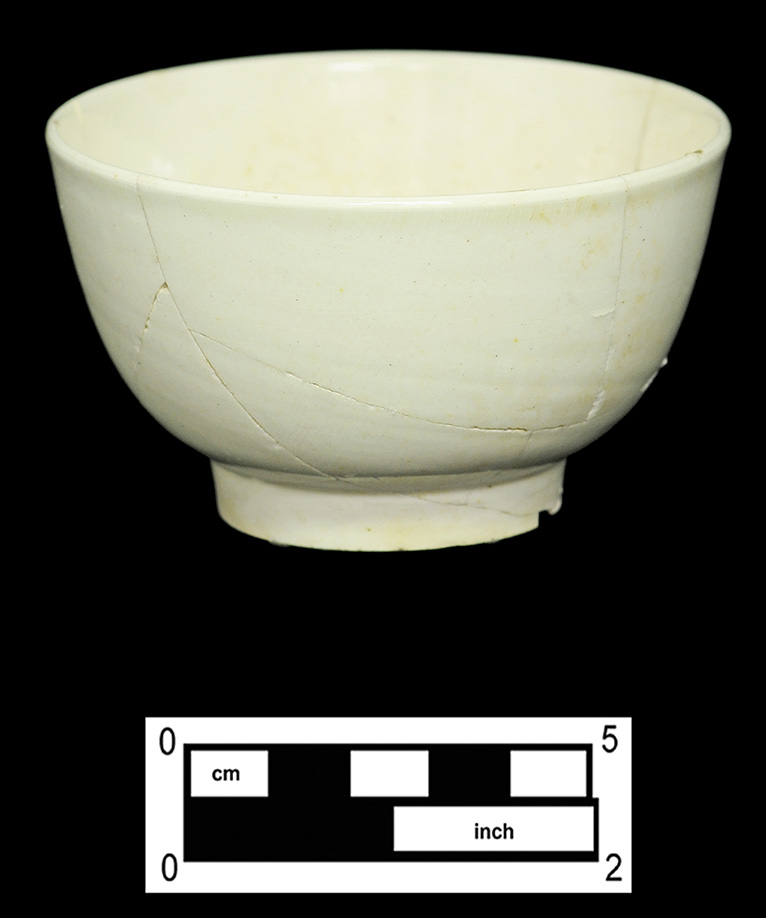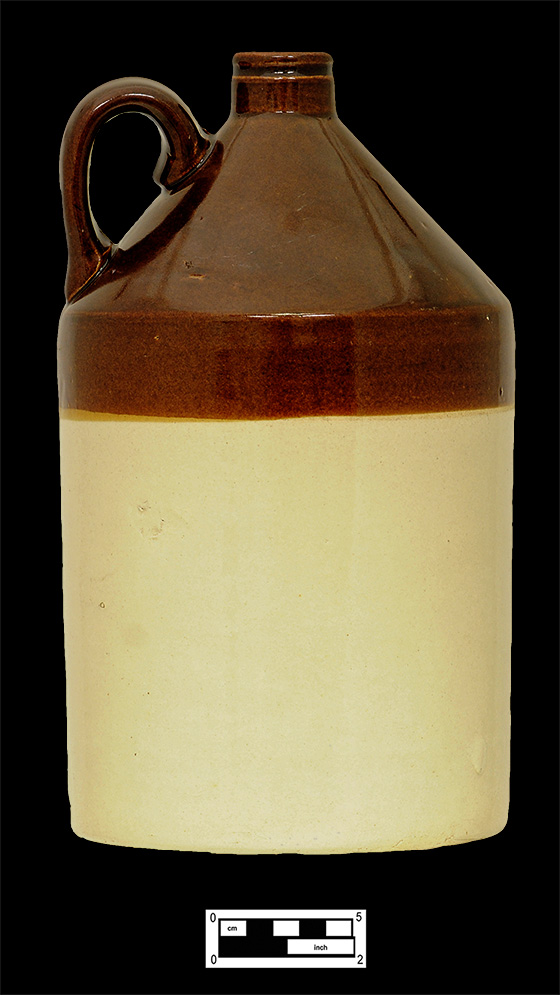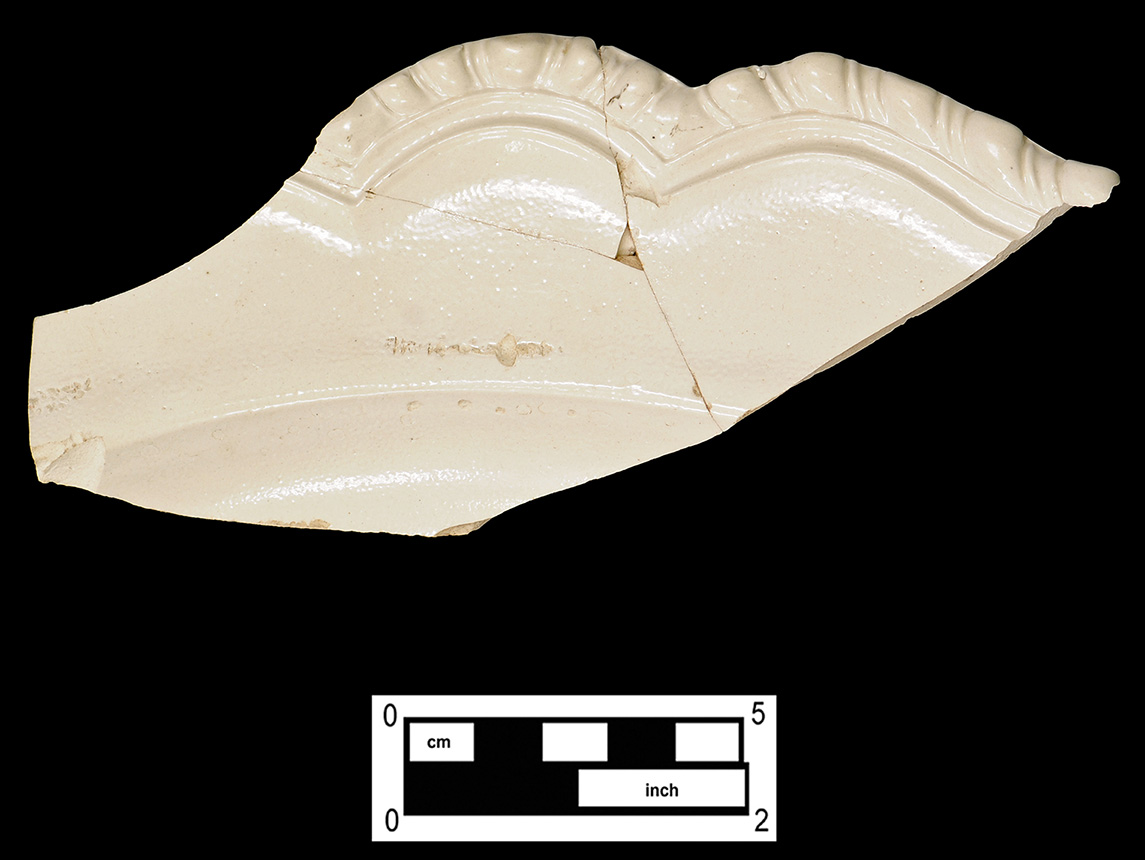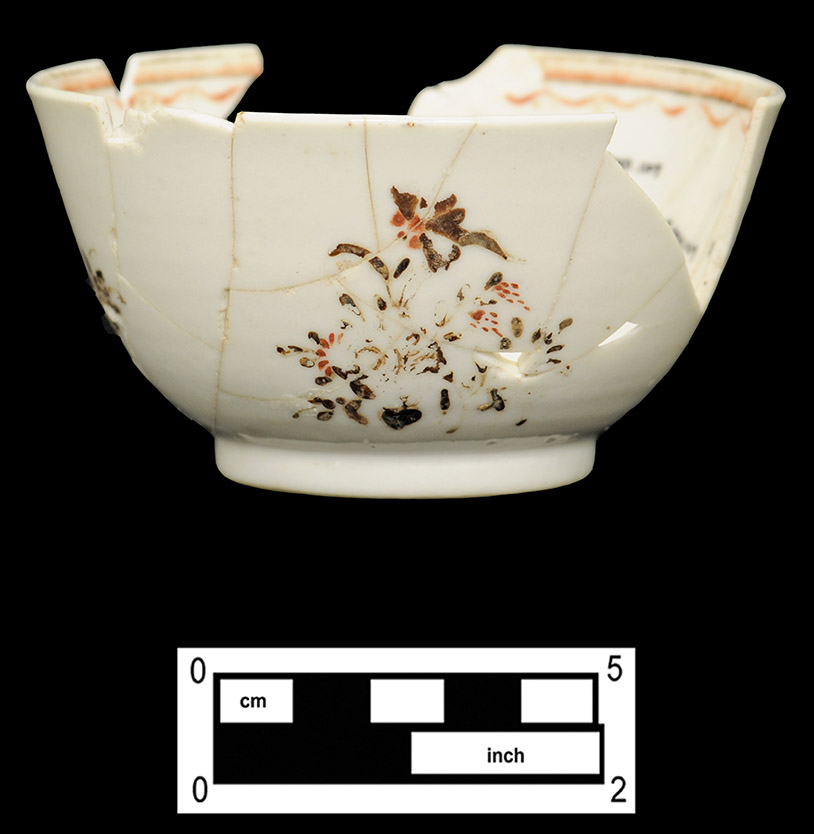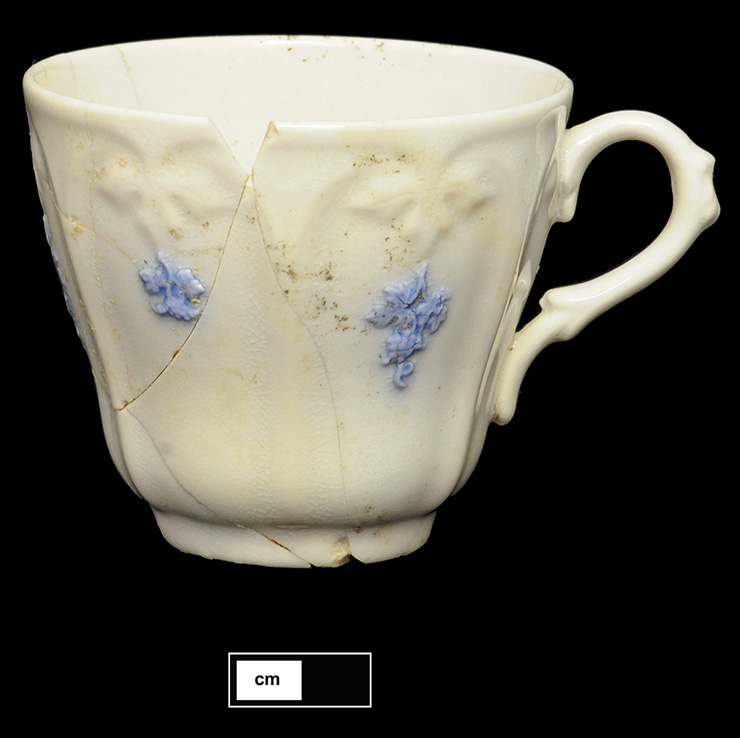For thousands of years, people throughout the world have been using clay to make pottery containers of various forms for use in their daily lives. Pottery vessels are essential for storing, cooking, and serving food, but once they break and lose their usefulness, they are discarded along with other household refuse. Pottery, unlike other materials—such as paper or metal—does not decay in the ground. It lasts for hundreds or even thousands of years for archaeologists to excavate and study. Its widespread usage and durability make it one of the archaeologist’s most valuable sources of information.
From a single sherd, a piece of a broken vessel, we try to determine what an object would have looked like and how it was used. This information, along with other discoveries, helps us understand how people lived in the past.
Clay can be shaped into different forms through a variety of techniques: by hand, on potters’ wheels, or by factory workers using industrial machines. There are three main types of clay: earthenware, stoneware, and porcelain. All types must be fired, either in an open fire or in a kiln, to remove moisture and transform the clay into a ceramic object. Earthenware is fired at the lowest temperatures, porcelain at the highest—which gives porcelain the hardest body. Earthenware is porous unless it is glazed, whereas stoneware and porcelain vessels are generally watertight without glaze, although they are usually glazed to give them an attractive glossy surface.
Earthenware
Earthenware is less expensive to produce since it is made from common clays that are readily available and require less fuel during the firing process. Potters all over the world had been making earthenware pots for thousands of years before Europeans settled in the Americas during the sixteenth and seventeenth centuries. While many ceramic vessels were imported from Europe, potters also came to the New World and established potteries in the colonies. In Philadelphia, potteries were operating within 10 years of the city’s 1682 founding. 1
Red- and Buff-Bodied Earthenware
Red- and buff-bodied earthenware vessels are commonly recovered on archaeological sites dating from the early seventeenth through the mid-nineteenth century. These earthenwares were coated with a lead-based glaze before firing not only to decorate them, but also to make them watertight. Glaze colors ranged from light yellow to black, depending on the specific ingredients of the glaze and whether or not coloring agents, especially iron oxide or manganese, were added. Slip (clay thinned with water) was often used for decoration. The most common slip color was white, which appears yellow under the lead glaze. Occasionally slip decoration was tinted green or various shades of brown. Metallic oxides—especially copper for green and iron or manganese for dark brown/black—could be dusted, sponged, or brushed onto a vessel’s surface before the glaze was applied.
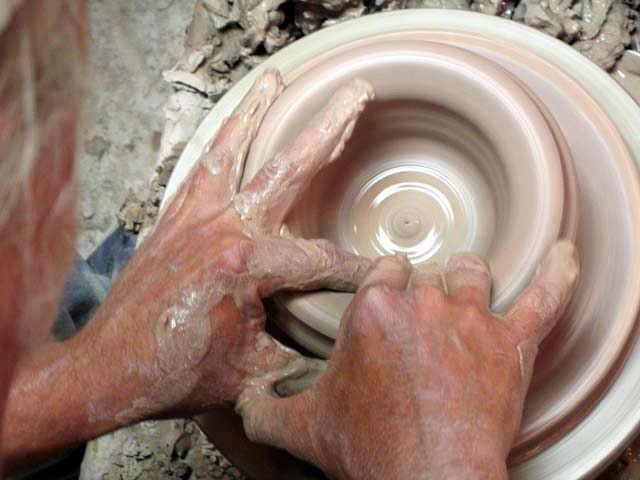
Red- and buff-earthenware vessels were formed on the potter’s wheel or shaped by draping a rolled out slab of clay over a “hump” mold.
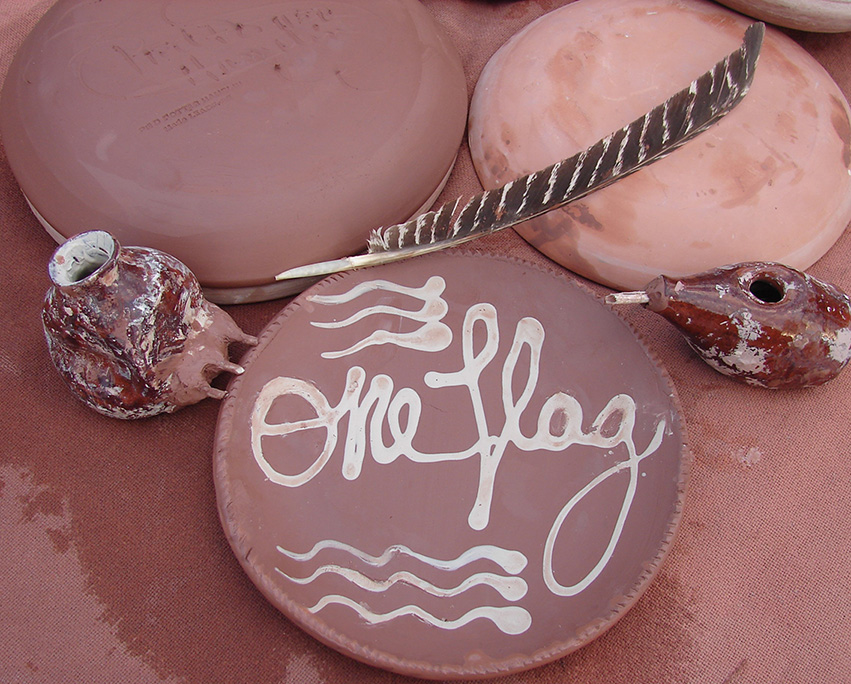
Tin-Glazed Earthenware
During the sixteenth and seventeenth centuries, some European potters began to make a more “refined” type of earthenware using clays that fired to a light buff color. These pots were more expensive to make because they required two firings: vessels were formed on the wheel or in a mold, then given an initial “biscuit” or “bisque” firing, after which they were glazed and fired again. The glaze on these vessels was a mixture of tin and lead, giving them an opaque white surface suitable for painted designs.
Refined Earthenwares
During the middle of the eighteenth century, potters in England (including Josiah Wedgwood) began to make a different kind of refined earthenware pottery. They used lead glaze on hard, light-colored bodies and developed new decorating techniques. The earliest of these wares had cream-colored bodies decorated with an overall green glaze or with spattered/splotched greens, browns, and/or grays within a light yellow glaze. Master potters began to establish large factories with separation of tasks for their workers and a greater reliance on tools to create standardized vessel forms and sizes. The new factory-made vessels soon dominated the market for table and teawares, especially after 1762, when Wedgwood perfected a thin, hard, light-colored body with a very light-colored glaze, called creamware or queensware (in honor of Queen Charlotte, the wife of George III).
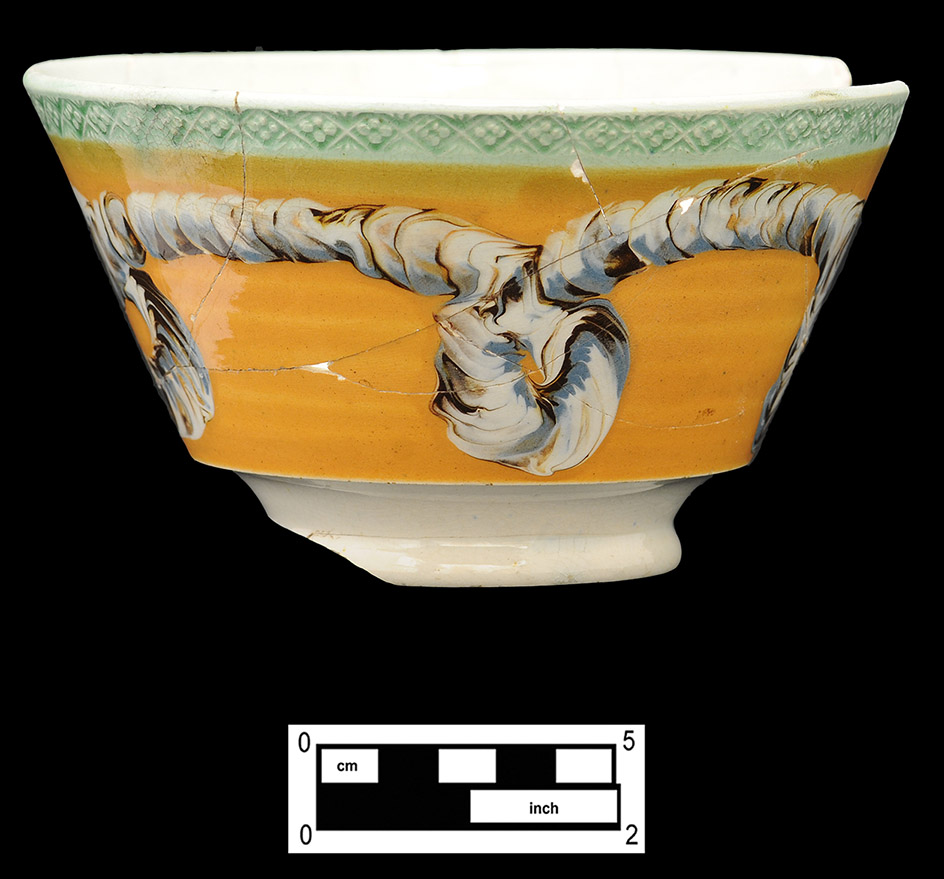
FIG. 11 PEARLWARE
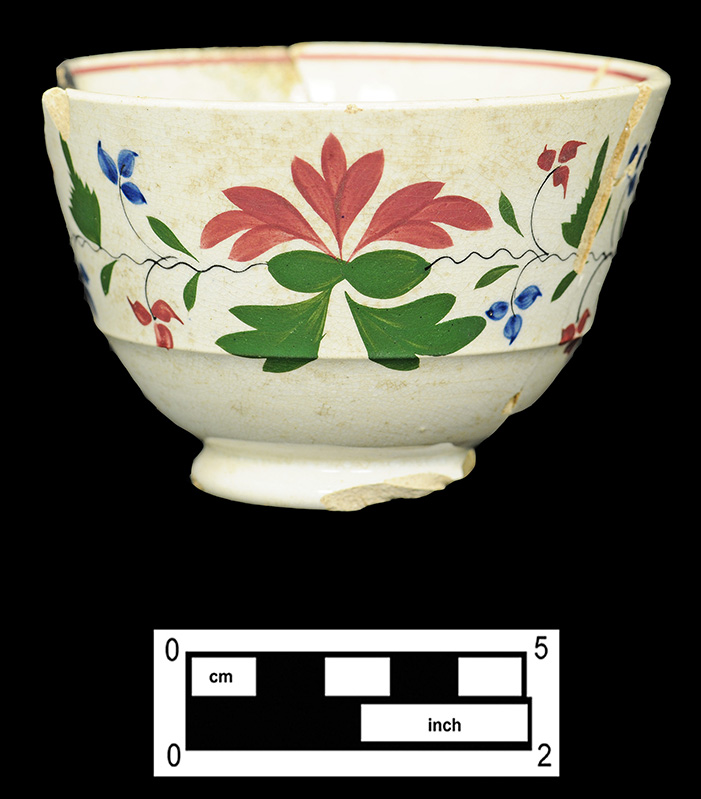
FIG. 12 WHITEWARE
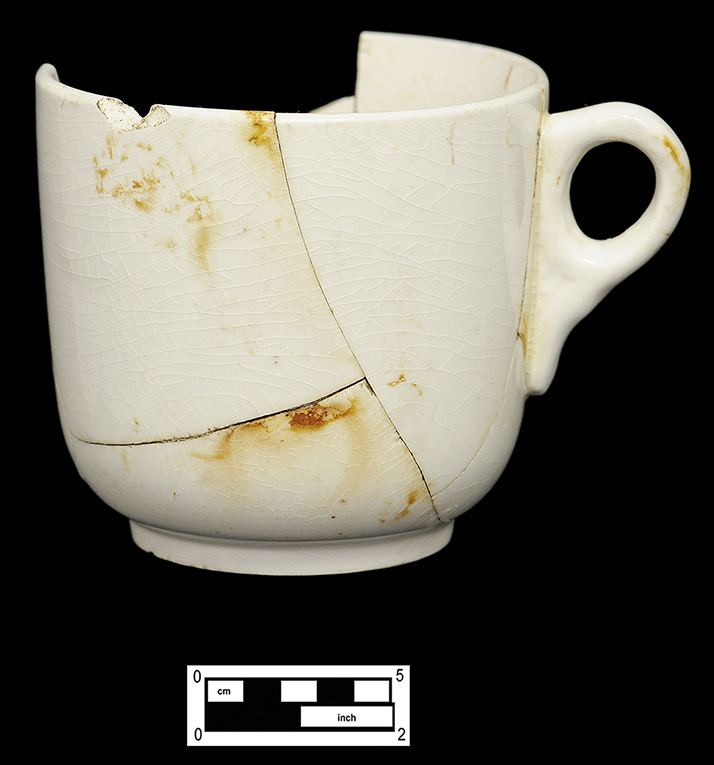
FIG. 13 WHITE GRANITE
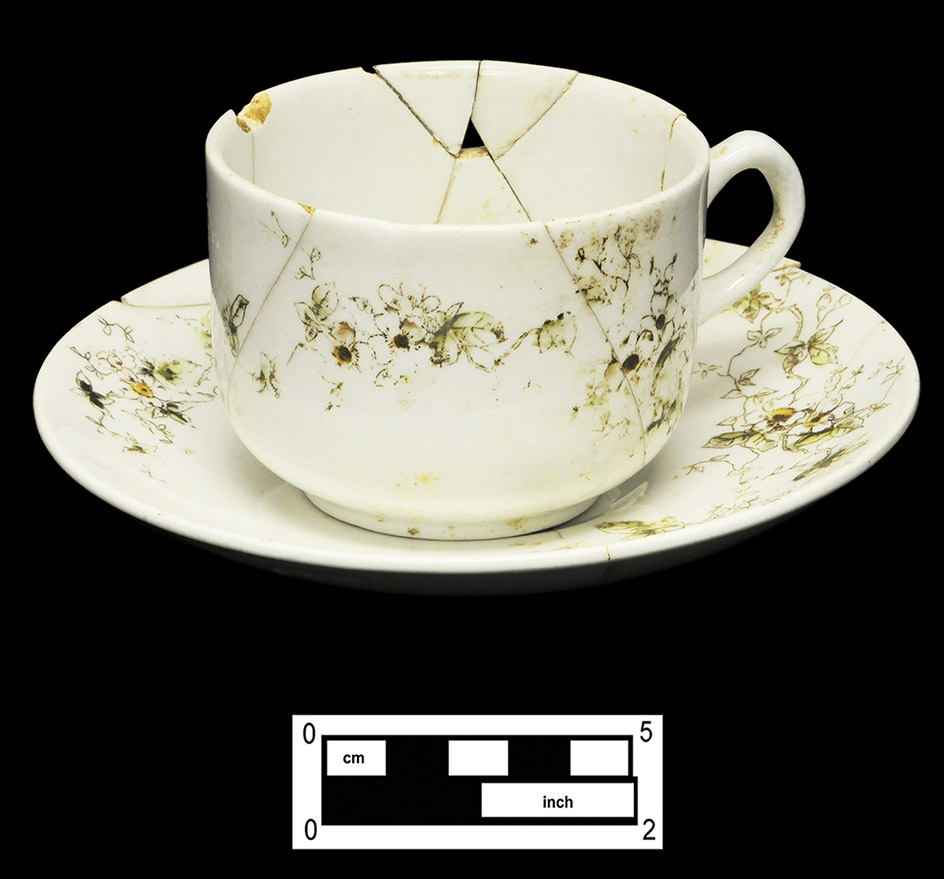
FIG. 14 IRONSTONE
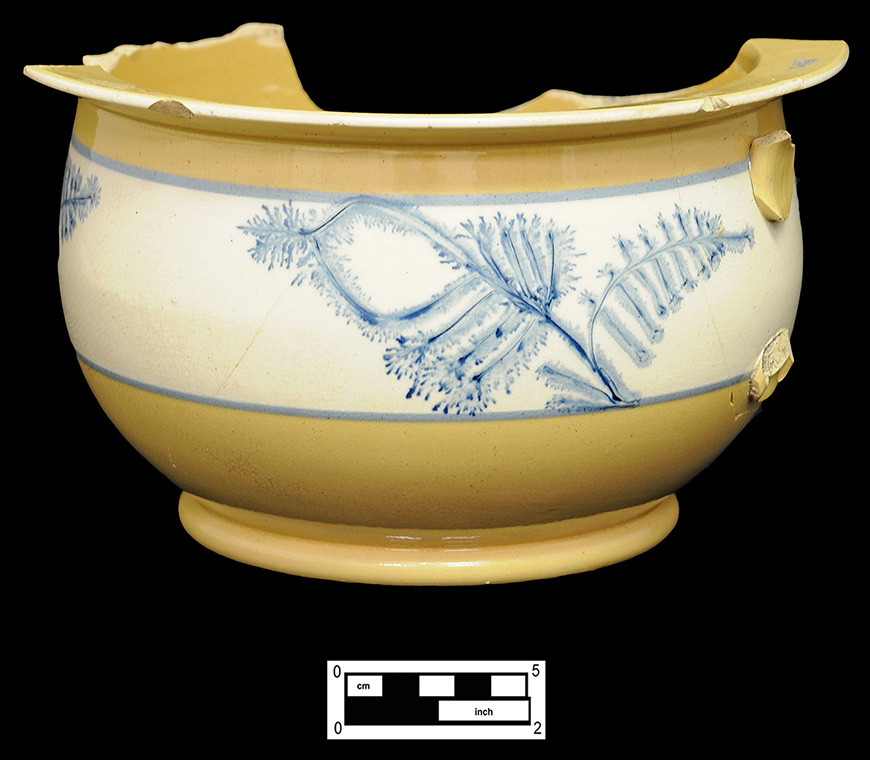
FIG. 15
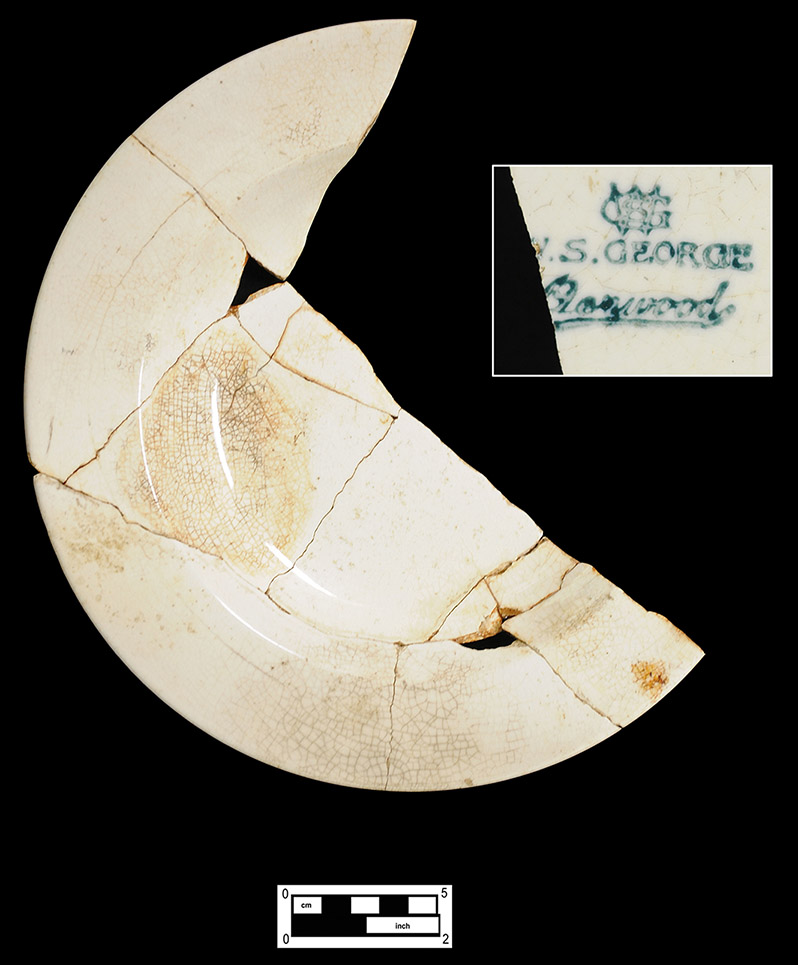
FIG. 16 AMERICAN WHITE GRANITE PLATE
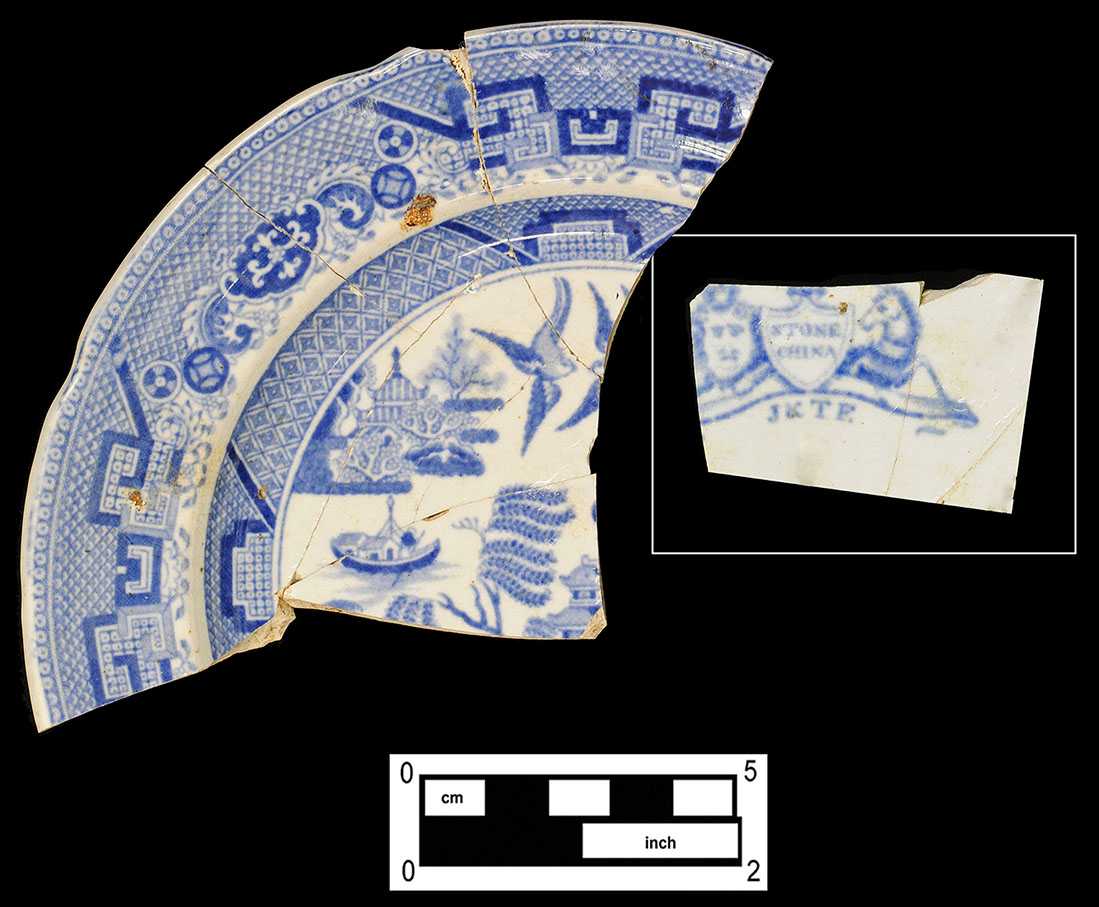
FIG.17 ENGLISH WHITEWARE TRANSFER PRINTED PLATE
From this beginning, the Staffordshire industrial potters continued to develop their refined wares into the types that we today call pearlware, whiteware, white granite, and ironstone, all highly standardized products.
Large-scale production of refined earthenwares in the United States began in the mid-nineteenth century. The major centers of production were Trenton, New Jersey, and the area around East Liverpool, Ohio. Many of the American factories began by making “yellowware,” a refined earthenware with, as the name states, a yellow/buff body and a clear or light yellow non-lead based glaze. In the Port Richmond neighborhood near the I-95 project area, J. E. Jeffords established the Philadelphia City Pottery, where he manufactured a wide variety of yellowware vessels. After about 1870, many U.S. industrial potters began to make their own versions of whiteware and white granite pottery in competition with British products. The most reliable way, at present, to separate British from American whiteware and white granite vessels is by their maker’s marks.
Stoneware
Clays for making stoneware fire at higher temperatures, producing a hard, compact body that is not permeable to liquids. While no glaze is necessary for stoneware to be watertight, vessels were often glazed to enhance their appearance. Stoneware was commonly glazed with salt, although potters in the south used both alkaline and wood-ash glazes. Salt-glazed vessels have an attractive glassy surface with a pitted appearance, often referred to as an orange peel texture.
Stonewares can also be glazed with a variety of “slip glazes” made from brown- or white-firing clays mixed with other substances. The most common types are brown Albany slip and white Bristol slip.
German and British stoneware potters came to North America in the early eighteenth century and began to make their wares in Philadelphia, New York City, and Yorktown, Virginia, between 1720 and 1730. The first stoneware potters made many kinds of vessels for use on the table and for storage, but by the end of the eighteenth century, stoneware tablewares had fallen out of fashion. However, because stoneware glazes—unlike earthenwares—did not contain lead, stoneware storage vessels continued to be popular, particularly for use with acidic foods. The disadvantages of stoneware compared to earthenware vessels were cost and portability: stonewares were more expensive and heavier than earthenwares. They were not as well-suited for use in cooking over open flames, but they were more durable in ordinary use. The most common stoneware vessel forms were mugs, jugs of all sizes, storage jars of all sizes, and chamber pots.
The best-known and longest-established stoneware potters in Philadelphia were members of the Remmey family, who came to the area from Manhattan by way of Baltimore. They had stoneware potteries in the city from 1827 until 1910.
White Salt-Glazed Stoneware
One type of salt-glazed ware was used extensively for table and teawares. By the early 1720s, British potters had developed a stoneware clay body that fired to a pure white, which they turned on wheels to make teacups and saucers, and formed in molds to make plates and other tablewares.
Porcelain
True porcelain, made of petuntse and kaolin clays, was invented in China, perhaps as early as 100 C.E. This clay combination is not easy to work and it must be fired to a very high temperature, using large amounts of fuel. Porcelain vessels are translucent when held up to a light. The only underglaze color to successfully withstand the high firing temperatures was cobalt blue, but various overglaze enamel colors and some colored glazes were also used for decoration. Porcelain with overglaze decoration required a third firing—after the bisque and glaze firings—at relatively low temperatures to fix the colors.
Chinese, Japanese, and Korean porcelain is known as “hard-paste porcelain” because of the clays used to make it. European potters did not discover how to make hard-paste porcelain until about 1700. It was very expensive to make, and the factories were usually under the direction of noblemen or kings. During the mid-eighteenth century, some English potters began to make “soft-paste porcelain” using a variety of clays and additives, such as ground glass. In 1794, English potters developed “bone china,” with finely ground burned bone as an ingredient. Bone china became a very popular product and was common in the United States after about 1800. 2
In the United States, there had been several attempts to make porcelain during the eighteenth century. None succeeded, but the firm of Bonnin and Morris—active in Philadelphia between 1770 and 1772/3—is the best known. Successful commercial production of hard-paste porcelain in the United States began about 1825, copying styles of fashionable French porcelain. 3 As both American and European porcelain became less expensive during the nineteenth century, more and more households had porcelain plates, cups, and figurines.
Why Do We Study Pottery?
Identifying the forms of pottery vessels and their dates of manufacture can provide many different types of information. First, knowing when vessels were made gives us an idea of when the specific archaeological deposit was created. Ceramics are one of the many artifacts that archaeologists use to calculate the terminus post quem (TPQ) of a deposit. The TPQ is the “date after which” artifacts entered the archaeological record; i.e., when they were discarded. For example, when an abandoned well is excavated, it is often found to be filled with refuse of various kinds. When did people stop using the well as a source of water and begin to fill it with garbage? We start by trying to identify the artifact with the latest beginning date. If we find a plate sherd with a maker’s mark for a firm that began operation in 1850, we know that the artifacts in the well were deposited after that date and we can say the TPQ is 1850.
Pottery sherds can also be used to determine the “mean ceramic date” (MCD). Using a simple mathematical formula that takes the beginning and end dates of manufacture for all of the dated sherds found in a deposit, archaeologists can calculate the mean date of manufacture for the vessels, providing a method of determining when a site was occupied.
Studying pottery, along with other artifacts, helps archaeologists reconstruct daily life. What was it like to live in Kensington-Fishtown during the nineteenth century? We can read about it in newspapers or government documents, but uncovering and identifying artifacts that people used in their homes every day brings the written accounts to life.
Ceramic vessels can help us understand consumer behavior by providing evidence of the decisions people made about their household goods. Did they spend a bit more to buy fancier dishes, imported from Europe, or did they economize and buy locally made pots? Perhaps the use of locally made pots was to show support for the city’s craftsmen? Or were European imports unavailable due to events, such as Jefferson’s early-nineteenth-century embargo on foreign trade? Archaeologists rely on artifacts—especially pottery—and historical records to enhance our understanding of how people lived in the past.
[tabby title=”bibliography”]
Bower, Beth A. “The Pottery-Making Trade in Colonial Philadelphia: The Growth of an Early Urban Industry.” In Domestic Pottery of the Northeastern United States 1625–1850, edited by S. P. Turnbaugh. New York: Academic Press Inc., 1985.
Denker, Ellen, and Bert Denker. The Main Street Pocket Guide to North American Pottery and Porcelain. Pittstown, NJ: The Main Street Press, 1985.
Fournier, Robert. Illustrated Dictionary of Practical Pottery. New York: Van Nostrand Reinhold Co., 1977.
Frelinghuysen, Alice Cooney. American Porcelain 1770–1920. New York: The Metropolitan Museum, 1989.
Gaimster, David. German Stoneware 1200–1900: Archaeology and Cultural History. London: British Museum Press, 1997.
Gates, William C., and Dana E. Ormerod. “The East Liverpool, Ohio, Pottery District: Identification of Manufacturers and Marks.” Historical Archaeology 16(1-2) (1982).
Gleeson, Janet. The Arcanum: The Extraordinary True Story. New York: Time Warner Books, 1998.
Godden, Geoffrey A.. An Illustrated Encyclopedia of British Pottery and Porcelain. New York: Crown Publishers Inc., 1966.
Greer, Georgiana. American Stonewares, the Art and Craft of Utilitarian Potters. Exton, PA: Schiffer Publishing Ltd., 1981.
Hume, Ivor Noël. A Guide to Artifacts of Colonial America. New York: Alfred A. Knopf, 1970.
Hume, Ivor Noël. If These Pots Could Talk: Collecting 2,000 Years of British Household Pottery. Milwaukee, WI: Chipstone Foundation, 2001.
Hurst, John G. David S. Neal, and H. J. E. van Beuningen. Pottery Produced and Traded in North-West Europe 1350–1650. Vol. VI of Rotterdam Papers: A Contribution to Medieval Archaeology. Rotterdam: Museum Boymans-van Beuningen, 1986.
Ketchum, William C., Jr. Pottery and Porcelain. New York: Alfred A. Knopf, New York, 1983.
Ketchum, William C., American Stoneware. New York: Henry Holt and Co., 1991.
Ketchum, William C., American Redware. New York: Henry Holt and Co., 1991.
Miller, George L.. “A Revised Set of CC Index Values for Classification and Economic Scaling of English Ceramics from 1787 to 1880.” Historical Archaeology 25(1) (1991).
[tabbyending]
Earthenware
Earthenware is less expensive to produce since it is made from common clays that are readily available and require less fuel during the firing process. Potters all over the world had been making earthenware pots for thousands of years before Europeans settled in the Americas during the sixteenth and seventeenth centuries. While many ceramic vessels were imported from Europe, potters also came to the New World and established potteries in the colonies. In Philadelphia, potteries were operating within 10 years of the city’s 1682 founding. 1
Red- and Buff-Bodied Earthenware
Red- and buff-bodied earthenware vessels are commonly recovered on archaeological sites dating from the early seventeenth through the mid-nineteenth century. These earthenwares were coated with a lead-based glaze before firing not only to decorate them, but also to make them watertight. Glaze colors ranged from light yellow to black, depending on the specific ingredients of the glaze and whether or not coloring agents, especially iron oxide or manganese, were added. Slip (clay thinned with water) was often used for decoration. The most common slip color was white, which appears yellow under the lead glaze. Occasionally slip decoration was tinted green or various shades of brown. Metallic oxides—especially copper for green and iron or manganese for dark brown/black—could be dusted, sponged, or brushed onto a vessel’s surface before the glaze was applied.

Red- and buff-earthenware vessels were formed on the potter’s wheel or shaped by draping a rolled out slab of clay over a “hump” mold.

Tin-Glazed Earthenware
During the sixteenth and seventeenth centuries, some European potters began to make a more “refined” type of earthenware using clays that fired to a light buff color. These pots were more expensive to make because they required two firings: vessels were formed on the wheel or in a mold, then given an initial “biscuit” or “bisque” firing, after which they were glazed and fired again. The glaze on these vessels was a mixture of tin and lead, giving them an opaque white surface suitable for painted designs.
Refined Earthenwares
During the middle of the eighteenth century, potters in England (including Josiah Wedgwood) began to make a different kind of refined earthenware pottery. They used lead glaze on hard, light-colored bodies and developed new decorating techniques. The earliest of these wares had cream-colored bodies decorated with an overall green glaze or with spattered/splotched greens, browns, and/or grays within a light yellow glaze. Master potters began to establish large factories with separation of tasks for their workers and a greater reliance on tools to create standardized vessel forms and sizes. The new factory-made vessels soon dominated the market for table and teawares, especially after 1762, when Wedgwood perfected a thin, hard, light-colored body with a very light-colored glaze, called creamware or queensware (in honor of Queen Charlotte, the wife of George III).

FIG. 11 PEARLWARE

FIG. 12 WHITEWARE

FIG. 13 WHITE GRANITE

FIG. 14 IRONSTONE

FIG. 15

FIG. 16 AMERICAN WHITE GRANITE PLATE

FIG.17 ENGLISH WHITEWARE TRANSFER PRINTED PLATE
From this beginning, the Staffordshire industrial potters continued to develop their refined wares into the types that we today call pearlware, whiteware, white granite, and ironstone, all highly standardized products.
Large-scale production of refined earthenwares in the United States began in the mid-nineteenth century. The major centers of production were Trenton, New Jersey, and the area around East Liverpool, Ohio. Many of the American factories began by making “yellowware,” a refined earthenware with, as the name states, a yellow/buff body and a clear or light yellow non-lead based glaze. In the Port Richmond neighborhood near the I-95 project area, J. E. Jeffords established the Philadelphia City Pottery, where he manufactured a wide variety of yellowware vessels. After about 1870, many U.S. industrial potters began to make their own versions of whiteware and white granite pottery in competition with British products. The most reliable way, at present, to separate British from American whiteware and white granite vessels is by their maker’s marks.
Stoneware
Clays for making stoneware fire at higher temperatures, producing a hard, compact body that is not permeable to liquids. While no glaze is necessary for stoneware to be watertight, vessels were often glazed to enhance their appearance. Stoneware was commonly glazed with salt, although potters in the south used both alkaline and wood-ash glazes. Salt-glazed vessels have an attractive glassy surface with a pitted appearance, often referred to as an orange peel texture.
Stonewares can also be glazed with a variety of “slip glazes” made from brown- or white-firing clays mixed with other substances. The most common types are brown Albany slip and white Bristol slip.
German and British stoneware potters came to North America in the early eighteenth century and began to make their wares in Philadelphia, New York City, and Yorktown, Virginia, between 1720 and 1730. The first stoneware potters made many kinds of vessels for use on the table and for storage, but by the end of the eighteenth century, stoneware tablewares had fallen out of fashion. However, because stoneware glazes—unlike earthenwares—did not contain lead, stoneware storage vessels continued to be popular, particularly for use with acidic foods. The disadvantages of stoneware compared to earthenware vessels were cost and portability: stonewares were more expensive and heavier than earthenwares. They were not as well-suited for use in cooking over open flames, but they were more durable in ordinary use. The most common stoneware vessel forms were mugs, jugs of all sizes, storage jars of all sizes, and chamber pots.
The best-known and longest-established stoneware potters in Philadelphia were members of the Remmey family, who came to the area from Manhattan by way of Baltimore. They had stoneware potteries in the city from 1827 until 1910.
White Salt-Glazed Stoneware
One type of salt-glazed ware was used extensively for table and teawares. By the early 1720s, British potters had developed a stoneware clay body that fired to a pure white, which they turned on wheels to make teacups and saucers, and formed in molds to make plates and other tablewares.
Porcelain
True porcelain, made of petuntse and kaolin clays, was invented in China, perhaps as early as 100 C.E. This clay combination is not easy to work and it must be fired to a very high temperature, using large amounts of fuel. Porcelain vessels are translucent when held up to a light. The only underglaze color to successfully withstand the high firing temperatures was cobalt blue, but various overglaze enamel colors and some colored glazes were also used for decoration. Porcelain with overglaze decoration required a third firing—after the bisque and glaze firings—at relatively low temperatures to fix the colors.
Chinese, Japanese, and Korean porcelain is known as “hard-paste porcelain” because of the clays used to make it. European potters did not discover how to make hard-paste porcelain until about 1700. It was very expensive to make, and the factories were usually under the direction of noblemen or kings. During the mid-eighteenth century, some English potters began to make “soft-paste porcelain” using a variety of clays and additives, such as ground glass. In 1794, English potters developed “bone china,” with finely ground burned bone as an ingredient. Bone china became a very popular product and was common in the United States after about 1800. 2
In the United States, there had been several attempts to make porcelain during the eighteenth century. None succeeded, but the firm of Bonnin and Morris—active in Philadelphia between 1770 and 1772/3—is the best known. Successful commercial production of hard-paste porcelain in the United States began about 1825, copying styles of fashionable French porcelain. 3 As both American and European porcelain became less expensive during the nineteenth century, more and more households had porcelain plates, cups, and figurines.
Why Do We Study Pottery?
Identifying the forms of pottery vessels and their dates of manufacture can provide many different types of information. First, knowing when vessels were made gives us an idea of when the specific archaeological deposit was created. Ceramics are one of the many artifacts that archaeologists use to calculate the terminus post quem (TPQ) of a deposit. The TPQ is the “date after which” artifacts entered the archaeological record; i.e., when they were discarded. For example, when an abandoned well is excavated, it is often found to be filled with refuse of various kinds. When did people stop using the well as a source of water and begin to fill it with garbage? We start by trying to identify the artifact with the latest beginning date. If we find a plate sherd with a maker’s mark for a firm that began operation in 1850, we know that the artifacts in the well were deposited after that date and we can say the TPQ is 1850.
Pottery sherds can also be used to determine the “mean ceramic date” (MCD). Using a simple mathematical formula that takes the beginning and end dates of manufacture for all of the dated sherds found in a deposit, archaeologists can calculate the mean date of manufacture for the vessels, providing a method of determining when a site was occupied.
Studying pottery, along with other artifacts, helps archaeologists reconstruct daily life. What was it like to live in Kensington-Fishtown during the nineteenth century? We can read about it in newspapers or government documents, but uncovering and identifying artifacts that people used in their homes every day brings the written accounts to life.
Ceramic vessels can help us understand consumer behavior by providing evidence of the decisions people made about their household goods. Did they spend a bit more to buy fancier dishes, imported from Europe, or did they economize and buy locally made pots? Perhaps the use of locally made pots was to show support for the city’s craftsmen? Or were European imports unavailable due to events, such as Jefferson’s early-nineteenth-century embargo on foreign trade? Archaeologists rely on artifacts—especially pottery—and historical records to enhance our understanding of how people lived in the past.
[tabby title=”bibliography”]
Bower, Beth A. “The Pottery-Making Trade in Colonial Philadelphia: The Growth of an Early Urban Industry.” In Domestic Pottery of the Northeastern United States 1625–1850, edited by S. P. Turnbaugh. New York: Academic Press Inc., 1985.
Denker, Ellen, and Bert Denker. The Main Street Pocket Guide to North American Pottery and Porcelain. Pittstown, NJ: The Main Street Press, 1985.
Fournier, Robert. Illustrated Dictionary of Practical Pottery. New York: Van Nostrand Reinhold Co., 1977.
Frelinghuysen, Alice Cooney. American Porcelain 1770–1920. New York: The Metropolitan Museum, 1989.
Gaimster, David. German Stoneware 1200–1900: Archaeology and Cultural History. London: British Museum Press, 1997.
Gates, William C., and Dana E. Ormerod. “The East Liverpool, Ohio, Pottery District: Identification of Manufacturers and Marks.” Historical Archaeology 16(1-2) (1982).
Gleeson, Janet. The Arcanum: The Extraordinary True Story. New York: Time Warner Books, 1998.
Godden, Geoffrey A.. An Illustrated Encyclopedia of British Pottery and Porcelain. New York: Crown Publishers Inc., 1966.
Greer, Georgiana. American Stonewares, the Art and Craft of Utilitarian Potters. Exton, PA: Schiffer Publishing Ltd., 1981.
Hume, Ivor Noël. A Guide to Artifacts of Colonial America. New York: Alfred A. Knopf, 1970.
Hume, Ivor Noël. If These Pots Could Talk: Collecting 2,000 Years of British Household Pottery. Milwaukee, WI: Chipstone Foundation, 2001.
Hurst, John G. David S. Neal, and H. J. E. van Beuningen. Pottery Produced and Traded in North-West Europe 1350–1650. Vol. VI of Rotterdam Papers: A Contribution to Medieval Archaeology. Rotterdam: Museum Boymans-van Beuningen, 1986.
Ketchum, William C., Jr. Pottery and Porcelain. New York: Alfred A. Knopf, New York, 1983.
Ketchum, William C., American Stoneware. New York: Henry Holt and Co., 1991.
Ketchum, William C., American Redware. New York: Henry Holt and Co., 1991.
Miller, George L.. “A Revised Set of CC Index Values for Classification and Economic Scaling of English Ceramics from 1787 to 1880.” Historical Archaeology 25(1) (1991).
[tabbyending]
References
- Beth A. Bower, “The Pottery-Making Trade in Colonial Philadelphia: The Growth of an Early Urban Industry,” in Domestic Pottery of the Northeastern United States 1625–1850, ed. S. P. Turnbaugh (New York: Academic Press Inc., 1985), 268 ↩
- George L. Miller, “A Revised Set of CC Index Values for Classification and Economic Scaling of English Ceramics from 1787 to 1880,” Historical Archaeology 25(1) (1991), 11 ↩
- Alice Cooney Frelinghuysen, American Porcelain 1770–1920 (New York: The Metropolitan Museum, 1989), 12. ↩
- Beth A. Bower, “The Pottery-Making Trade in Colonial Philadelphia: The Growth of an Early Urban Industry,” in Domestic Pottery of the Northeastern United States 1625–1850, ed. S. P. Turnbaugh (New York: Academic Press Inc., 1985), 268 ↩
- George L. Miller, “A Revised Set of CC Index Values for Classification and Economic Scaling of English Ceramics from 1787 to 1880,” Historical Archaeology 25(1) (1991), 11 ↩
- Alice Cooney Frelinghuysen, American Porcelain 1770–1920 (New York: The Metropolitan Museum, 1989), 12. ↩
